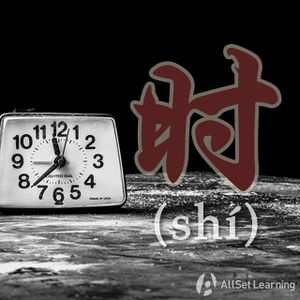Difference between revisions of "Expressing "when" with "shi""
m |
|||
| Line 19: | Line 19: | ||
<div class="liju"> | <div class="liju"> | ||
| − | * | + | * 你 去 面试 时,要 穿 得 正式 一点。<span class="trans"> <em>when</em> </span> |
| − | * | + | * 他们 结婚 时,只 请 了 几 个 最 好 的 朋友。<span class="trans"> <em>when</em> </span> |
| − | * | + | * 大学 毕业 时,他们 分手 了。<span class="trans"> <em>when</em> </span> |
| − | * | + | * 飞机 起飞 时,他 关 了 手机 和 电脑。<span class="trans"> <em>when</em> </span> |
| − | * 你 | + | * 你 出门 <em>时</em> 不 要 忘 了 带 钥匙。 <span class="trans"><em>when</em> </span> |
| − | * | + | * 我们 考试 <em>时</em> 不 能 看 手机。<span class="trans"> <em>when</em> </span> |
</div> | </div> | ||
Revision as of 03:13, 2 March 2016
-
Level
-
Similar to
-
Used for
-
Keywords
| This article is a stub. Editors can help the Chinese Grammar Wiki by expanding it. |
By now you should now how to express "when" using "的时候" (de shíhou). But there's also a slightly shorter, more formal way to do it: simply use 时 (shí) all by itself. (No 的!)
Structure
(Subject) + Verb / Adj. + 时……
As time words can appear before or after the subject, you can also place the Time + 时 (shí) after the subject.
Examples
There are two great examples of this pattern in the poem 远和近 by 顾城 (note that the provided translation is not always literal):
- 你 去 面试 时,要 穿 得 正式 一点。 when
- 他们 结婚 时,只 请 了 几 个 最 好 的 朋友。 when
- 大学 毕业 时,他们 分手 了。 when
- 飞机 起飞 时,他 关 了 手机 和 电脑。 when
- 你 出门 时 不 要 忘 了 带 钥匙。 when
- 我们 考试 时 不 能 看 手机。 when
See also
Sources and further reading
Books
- Basic Patterns of Chinese Grammar (pp. 24-5) →buy
- Integrated Chinese: Level 1, Part 2 (3rd ed) (pp. 293-4) →buy



